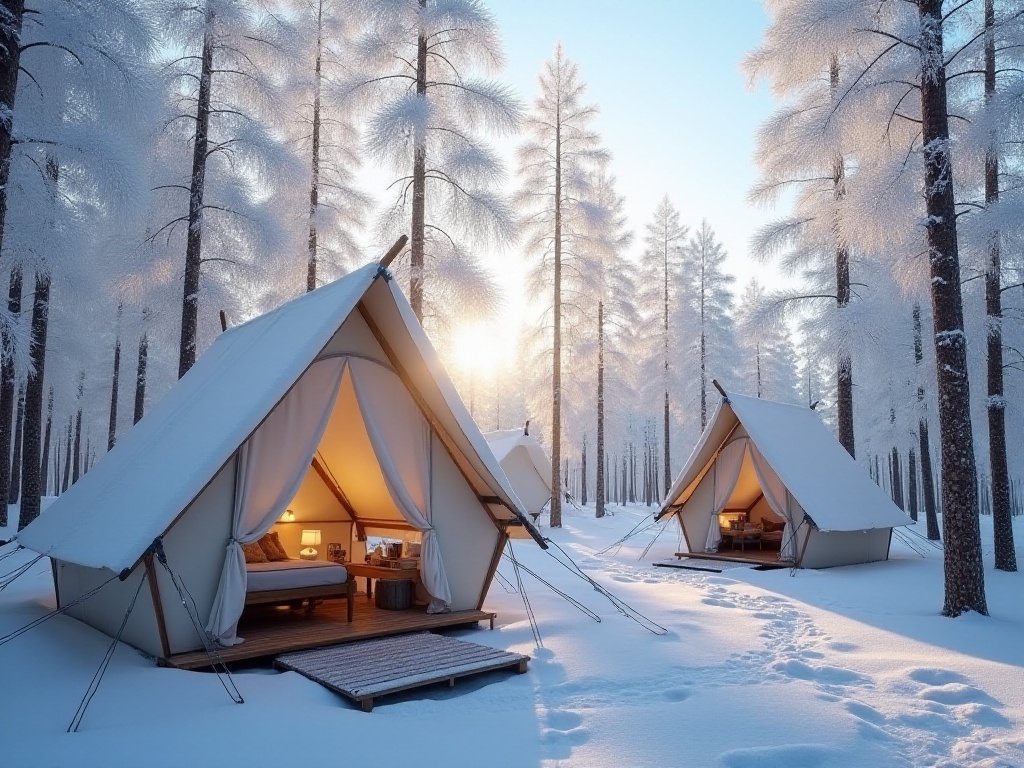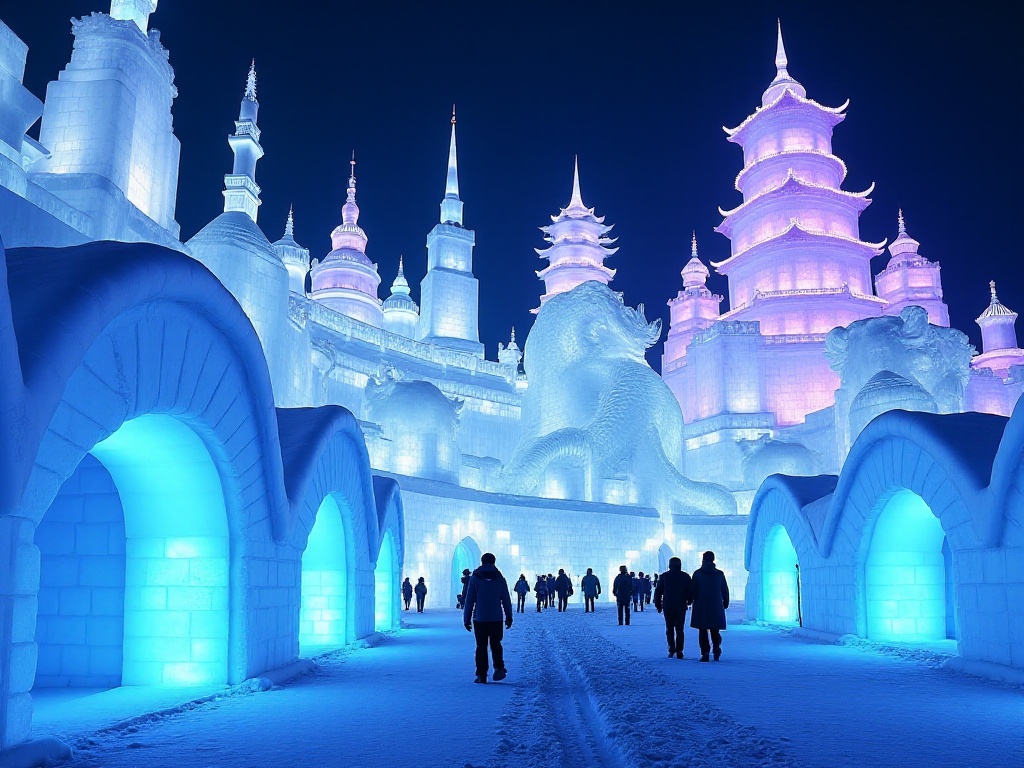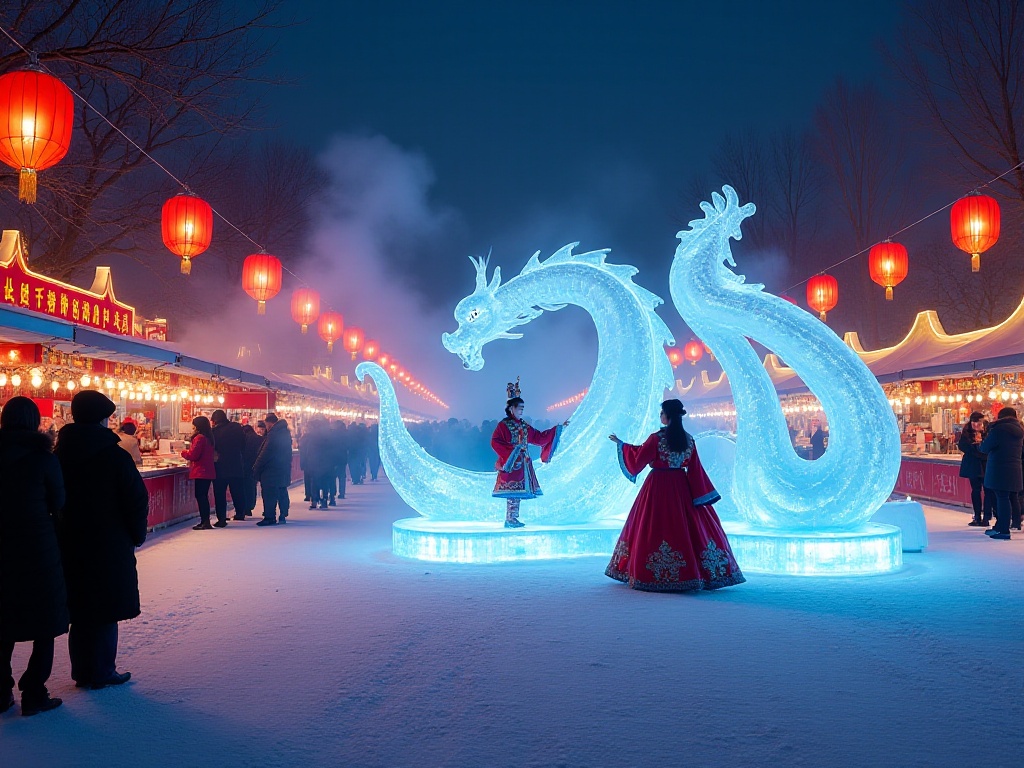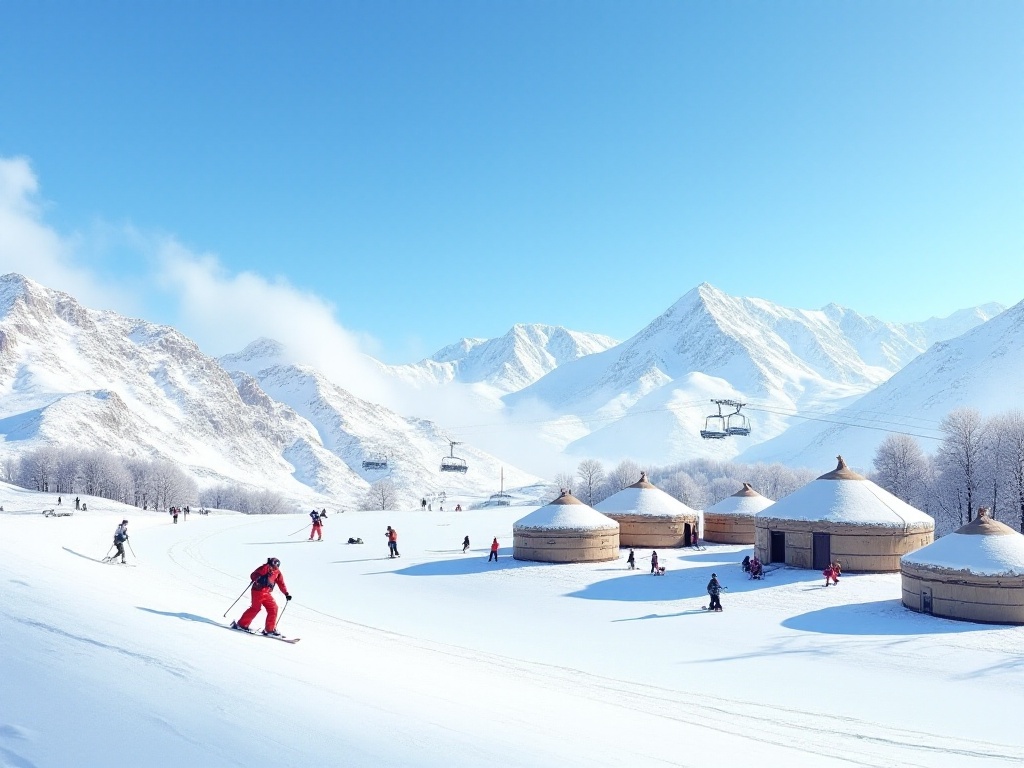Major Trends
I've been truly amazed by how popular ice and snow tourism has become in China! When I was young, mentioning snow tourism would immediately bring to mind places like Snow Village and Yabuli in Northeast China. But things are so different now - from north to south, outdoors to indoors, China's ice and snow tourism industry is undergoing a massive transformation.
The other day, I saw the Ministry of Culture and Tourism release 12 premium winter tourism routes, and I was stunned! These routes include not just traditional northeastern routes, but also Beijing, Chongqing, Sichuan, Xinjiang, and more. It's incredible how ice and snow activities have become accessible nationwide!
Just yesterday, I was talking to a friend who mentioned that even their small southern city now has an indoor ski resort that's packed on weekends. It made me realize that the landscape of ice and snow tourism is being redefined, and this change is happening incredibly fast!
The Numbers Tell the Story
Let's look at the latest data - it's absolutely mind-blowing! In the 2023-2024 ice and snow season, national ice and snow tourism reached 430 million visits, generating 524.7 billion yuan in revenue. Think that's impressive? The 2024-2025 forecast is even more spectacular, with visitor numbers expected to grow to 520 million and revenue projected to exceed 630 billion yuan! A quick calculation shows that roughly one in every four Chinese people participated in ice and snow tourism - that's insane!
Recently, I've been frequently checking various travel platforms, and since November 2024, the popularity of ice and snow tourism has been skyrocketing. Ski-related searches on Meituan increased 83% month-over-month, which is already impressive, but Tongcheng Travel saw an even more dramatic increase with ice and snow tourism searches growing over 300%! On Qunar, searches for "skiing" and "ice and snow" jumped 1.7 times. As someone who regularly uses travel apps, I can clearly feel the growing enthusiasm for ice and snow tourism.
These numbers actually reflect many interesting phenomena. For instance, young people today are more willing to try new things and aren't satisfied with traditional sightseeing. Also, consumer attitudes are changing, with people willing to pay for quality ice and snow experiences. And technological advances are making it possible for southerners to enjoy winter sports too.

North-South Integration
Speaking of this topic, I have to share my recent personal experience. A few days ago, I was on a business trip to Jiangxi and was amazed to find a huge indoor ski resort in a local mall! It reminded me of the Ice and Snow World I saw in Harbin. Though smaller in scale, the experience was just as good.
According to the latest data from Qunar, bookings for ice and snow scenic spots nationwide have increased by 30% year-over-year. Even more surprisingly, searches for keywords like "skiing," "ice and snow," and "ski resort" have tripled! What does this indicate? It shows that people's demand for ice and snow tourism is no longer limited to the traditional northeastern regions.
I have a friend in Guangzhou who used to complain about having to travel far to go skiing. Now, they've built indoor ski resorts there too, and he can enjoy skiing with friends on weekends. This change is amazing! Plus, these indoor ski resorts are designed to be very sophisticated, with professional temperature control and snow-making technology, so there's no need to worry about the quality of experience.
Speaking of experiences, I must mention the rime viewing belt in Jilin. Their recent "snow camping" activity has been incredibly popular, attracting 55,000 tourists! It's gotten over 1 billion views online. I watched their videos, and just imagining setting up a tent in the vast snow and watching stars at night feels incredibly romantic.
The north and south have actually developed a great complementary relationship in ice and snow tourism. The north has natural resources perfect for large outdoor winter activities. The south relies on technological advantages to develop indoor ice and snow projects. This complementarity not only meets the needs of tourists from different regions but also promotes the development of the entire industry.

Innovative Activities
Ice and snow tourism activities have become so creative now! When I went skiing as a kid, there were only basic ski slopes. But now? Besides traditional skiing and ice sculptures, there are so many fun new activities.
Take Changchun for example - they've done an excellent job combining ice and snow with culture, sports, and commerce. When I visited recently, I actually saw a Sichuan face-changing performance in the Ice and Snow World! Can you imagine that scene? Artists performing face-changing in traditional opera costumes in front of brilliant ice sculptures - the visual impact was absolutely stunning.
Moreover, they held dragon and lion dances during the ice festival. Traditional dragon and lion dances are already lively, but placing them in an icy environment added a unique beauty. I remember all the tourists frantically taking photos with their phones - it was such a vibrant scene.
Modern ice and snow activities now incorporate lots of technology. Some ski resorts have introduced AR technology, allowing beginners to learn skiing moves under the guidance of virtual coaches. Some places offer night fluorescent skiing, with LED light strips on the slopes, making night skiing incredibly cool.
I recently saw a particularly interesting project combining ice and snow with dining. Some places build ice house restaurants where guests can enjoy hot pot in sub-zero environments - the contrast makes for a unique experience.
Some places have started hosting ice and snow music festivals, building ice sculpture stages and inviting famous singers to perform. Imagine listening to live music on a snowy night, surrounded by twinkling lights and ice sculptures - the atmosphere is amazing!

Facility Upgrades
Speaking of supporting facilities, ice and snow tourism has become increasingly user-friendly. The 12 premium routes planned by the Ministry of Culture and Tourism are very well thought out. They include not just winter sports venues, but also scenic areas, nature reserves, museums, and various festivals.
I recently experienced one of these routes and found they've done a great job with many details. For instance, every ski resort has a professional medical team in case of accidents. The rest areas are thoughtfully designed, with heating, charging stations, and even dedicated beauty touch-up areas for appearance-conscious visitors.
The dining options are also impressive, with restaurants at various price points. From fast food to sophisticated themed restaurants, many incorporate local specialties. I tried a modified version of northeastern iron pot stew at a ski resort restaurant, and it was absolutely delicious!
Accommodation options have become more diverse. From budget hotels to luxury resorts and distinctive homestays, you can find it all. I particularly love those homestays that perfectly combine local character with modern comfort - you can experience local flavor without sacrificing comfort.
Transportation infrastructure continues to improve. Many scenic areas have dedicated shuttle buses from city centers to attractions. Some places have introduced "ice and snow tourism passes" that allow free transfers between different attractions, which is very convenient.
Additionally, many places are working to explore local folk culture. Some ski resorts regularly hold folk performances, allowing visitors to learn about local culture while enjoying sports. Some places have opened handicraft workshops where tourists can learn to make local specialty crafts.
Southern provinces have also put great effort into developing indoor ice and snow facilities. They've not only introduced advanced refrigeration equipment and snow-making technology but also incorporated many innovative elements into venue design. For example, some indoor ski resorts change their themed decorations according to different holidays, giving visitors a new experience each time.

Future Outlook
Looking at current development trends, China's ice and snow tourism industry is truly full of unlimited possibilities. Both natural resources and technological capabilities provide strong support for this industry.
I think we might see more innovative projects like metaverse skiing in the future. Imagine putting on VR equipment and racing down slopes in the Alps, or competing with winter sports enthusiasts from around the world in a virtual world - these scenarios might become reality soon.
Technological development will also make winter sports safer and more interesting. For example, smart protective equipment could monitor athletes' conditions in real-time and warn of potential dangers. AI coaches could create personalized training plans to help beginners master techniques faster.
With the impact of climate change, indoor ice and snow facilities might become increasingly important. But this will also drive technological innovation, allowing us to experience high-quality winter sports in more places.
Most importantly, ice and snow tourism is becoming a new lifestyle. It's not just a sport, but also a way of socializing and a life attitude. I believe more people will fall in love with winter sports in the future, giving this industry even greater vitality.
What other exciting changes do you think we'll see in future ice and snow tourism? Will we see more innovative projects like metaverse skiing? Feel free to share your thoughts in the comments!


